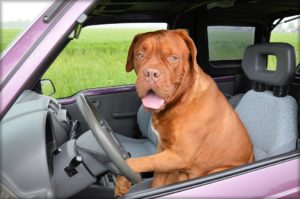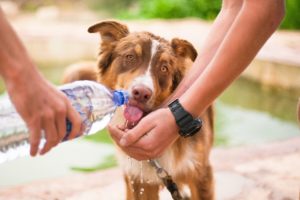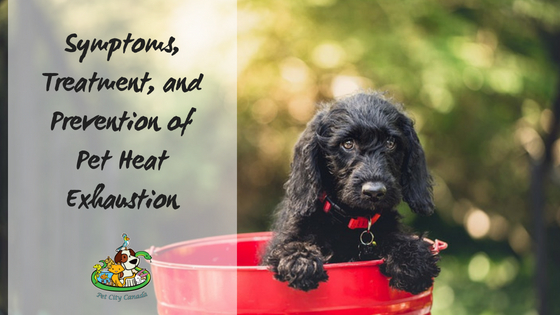Signs, Symptoms, Treatment, and Prevention of Pet Heat Exhaustion
As the hot weather of summer rises, so does the accidental incidences of pet heat exhaustion. Since dogs don’t sweat out excess body heat, they are more susceptible to heat exhaustion and heat stroke. Pet owners should know the signs, symptoms, treatments, and preventions associated with pet overheating. When dogs become symptomatic of overheating you need to act quickly to prevent heatstroke, kidney failure, and/or cardiac arrest.
If you suspect your dog has heat exhaustion, monitor his/her body temperature and heart rate closely. If your dogs’ temperature rises to 102 degrees Fahrenheit or above your pet needs to be seen by a Veterinarian. Your pet is considered to be at risk of heat stroke or cardiac arrest if his/her body temperature reaches 106 degrees Fahrenheit or higher. Always contact a Veterinarian before starting any home treatments. Read more to learn about the signs, symptoms, treatments, and prevention of Pet Heat Exhaustion.
Signs:
• Excessive Panting and/or drooling.
• Lethargy (slower at responding and drowsiness), or restlessness.
• Rapid heart rate and increased respiratory rate.
• Glazed eyes, dizziness, lack of coordination.
Symptoms:
• Gums or tongue may turn blue or bright red, and ear tips turn red.
• Collapse or convulse.
• Increased body temperature.
• Vomiting and/or diarrhea.
• Gasping for breath.
Treatment:
• Consult a Veterinarian as soon as you suspect your dog has heat exhaustion or other health concerns to avoid delay in starting treatment.
• Remove your pet from direct sunshine, hot enclosures, or areas with poor ventilation.
• Move your pet into an air-conditioned room or near a fan.
• If near water such as a lake, river, pool, sprinkler, or garden hose, wet your dog slowly. Put your dog in the bathtub if you are not near another source of water.
• Check body temperature using a rectal thermometer (normal canine body temperature is between 101 – 102.5 degrees Fahrenheit or 38.3 – 39.2 Celsius).
• Monitor temperature closely and bring it down to 103 degrees Fahrenheit if it is elevated; you don’t want to decrease body temperature too quickly or too low. You can also use a dog cooling mat for your furry friend to lay on during the day.
• Offer cool or lukewarm water and plenty of it! A small amount of salt can be added to the water to replace the minerals that have been lost due to drooling. Don’t give your dog ice chips as this will bring down body temperature too quickly.

Prevention:
 • NEVER leave a pet in an enclosed, hot area or vehicle even in the shade!
• NEVER leave a pet in an enclosed, hot area or vehicle even in the shade!
• Make sure the pet enclosure is well ventilated with good air flow.
• Carry a container of water and keep your pet well hydrated. You can find many options for dog water bowls travelling without having to bring a large dish.
• Don’t over-exercise your pet during hot or humid weather.
• Give your dog shady and cooler places to rest often.
• Take walks in the morning or evening when the heat of the day is not so intense.
• Keep walks confined to parks and forests, try avoiding walking on hot pavement.
Younger dogs, older dogs, and dogs with thicker coats are more at risk of heat exhaustion than most. If your home isn’t air-conditioned you may want to consider Doggy Daycare while you are away during the day. Make an appointment with one of our qualified Pet Groomers at Pet City Canada to condition and clip your dogs’ coat for the summer’s hot weather.





